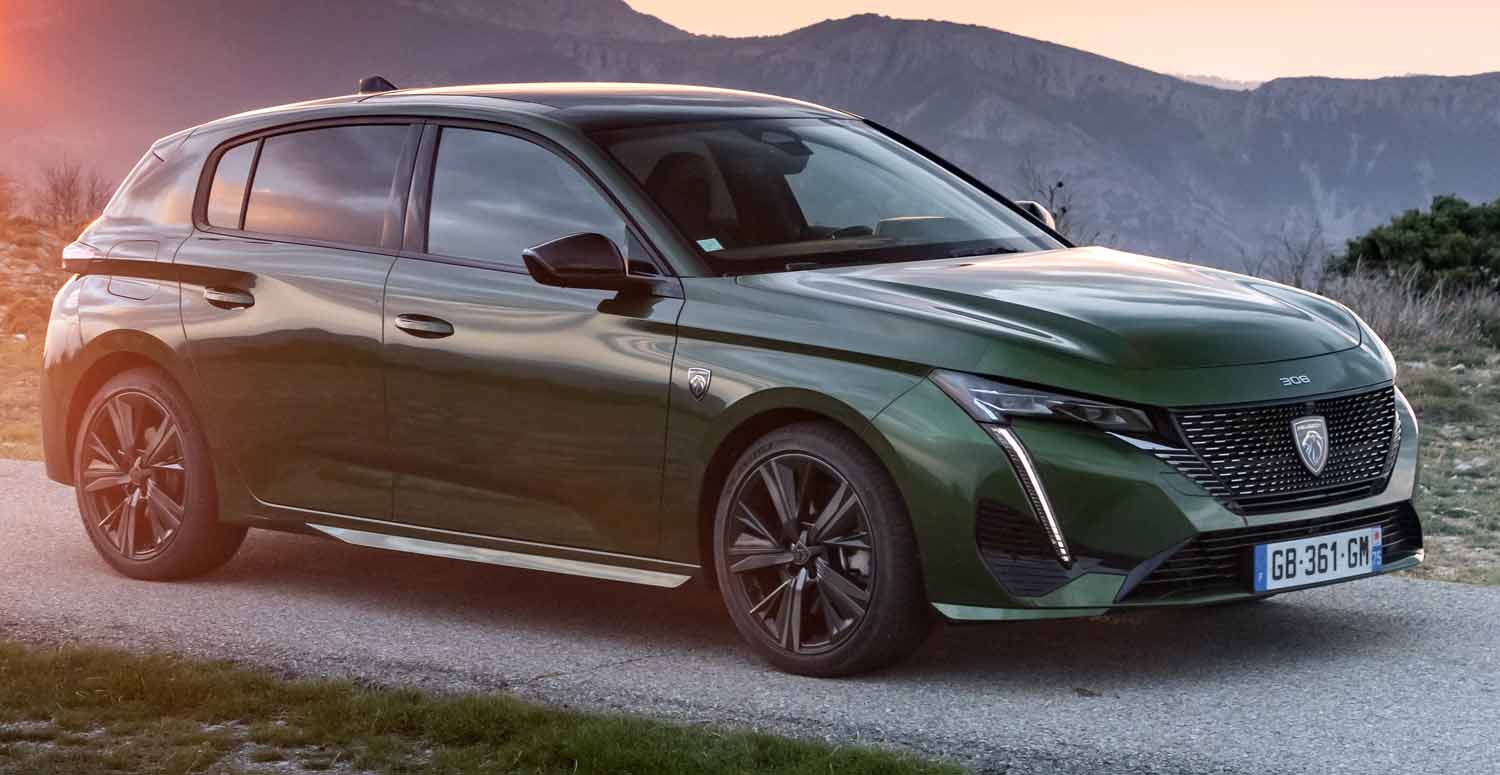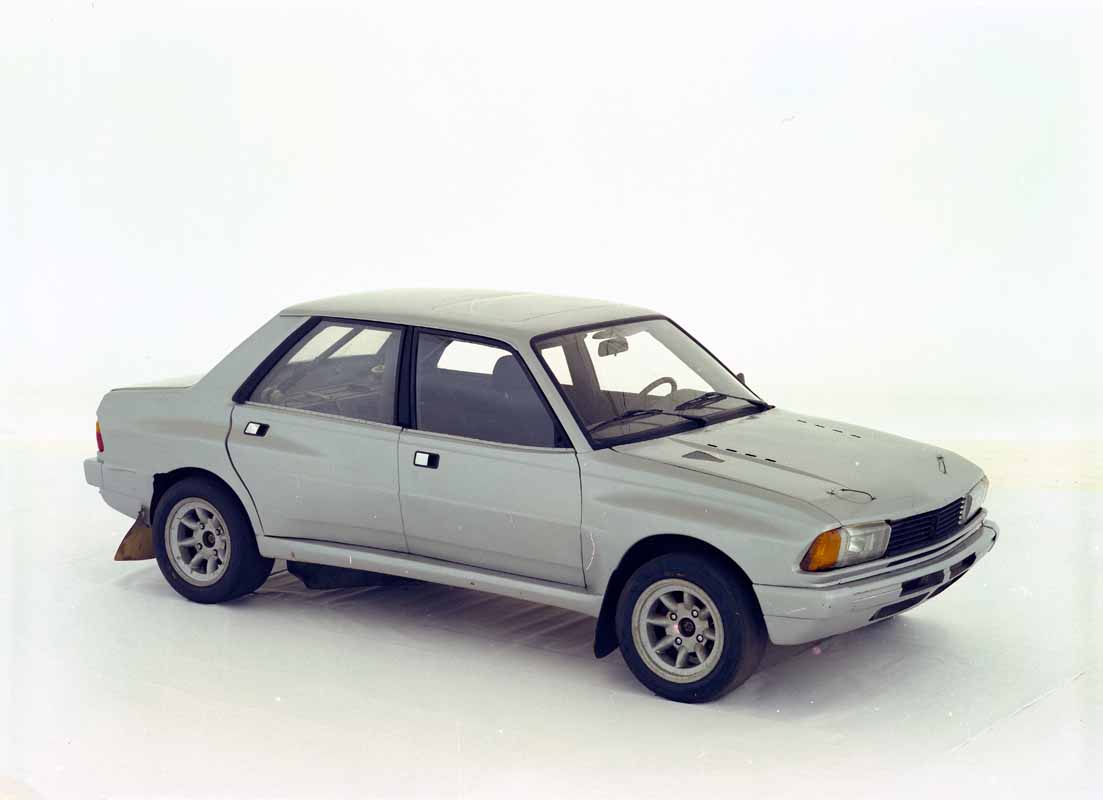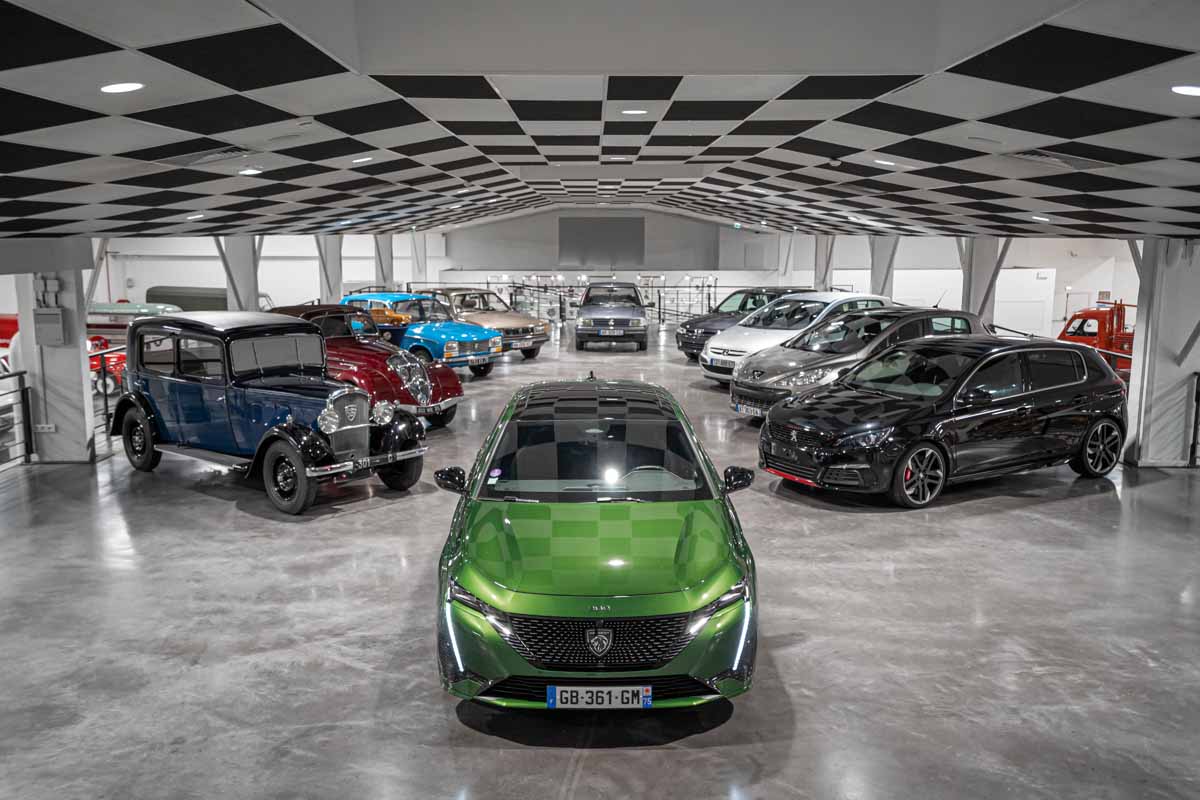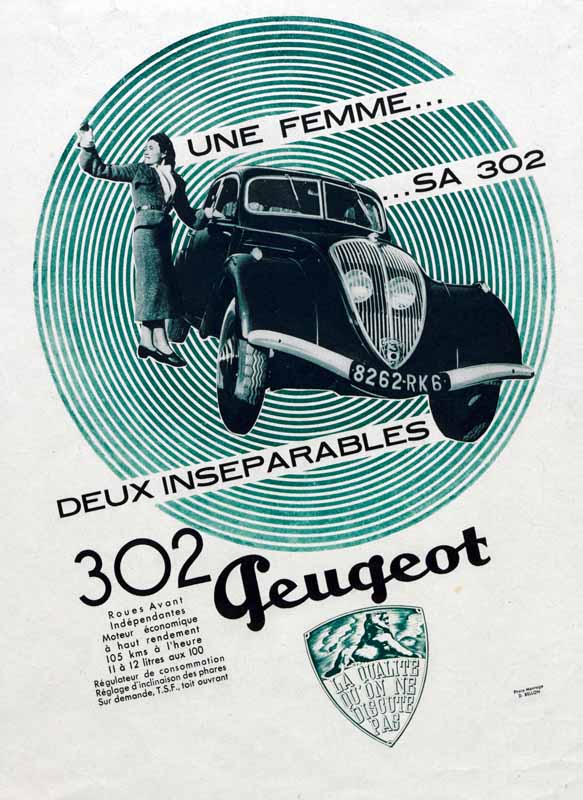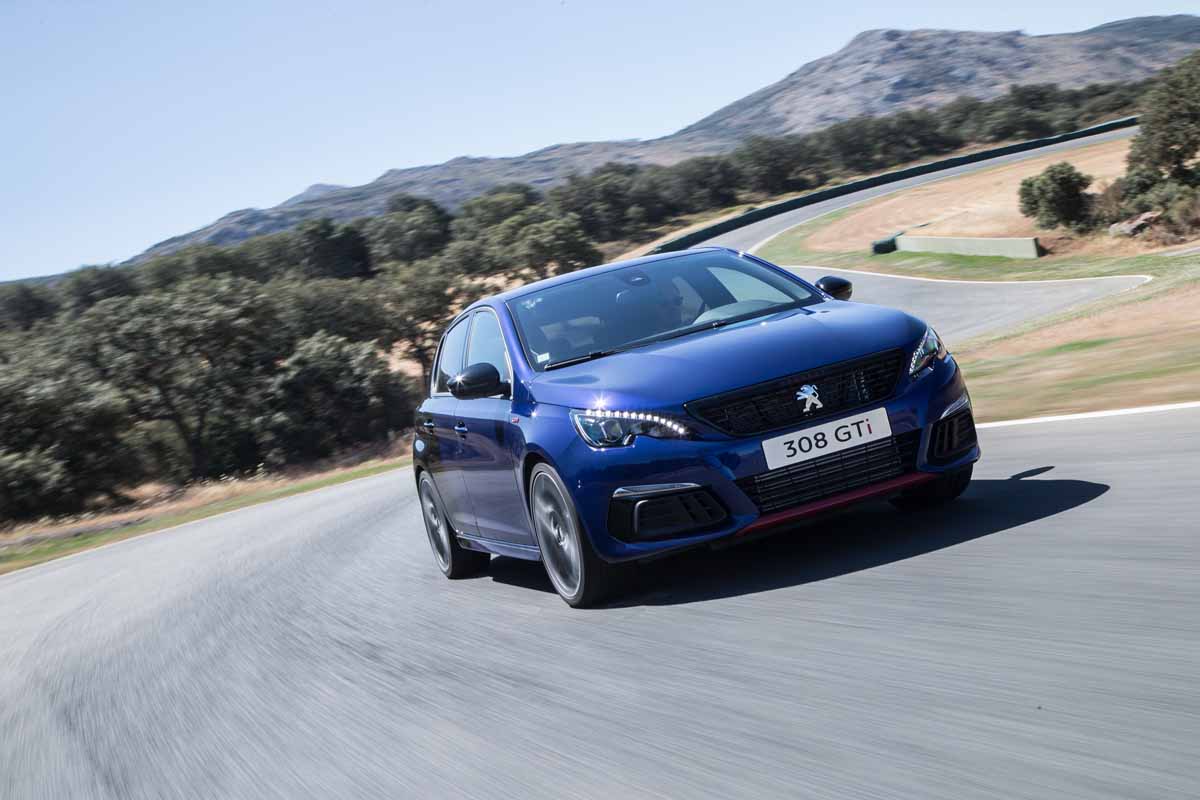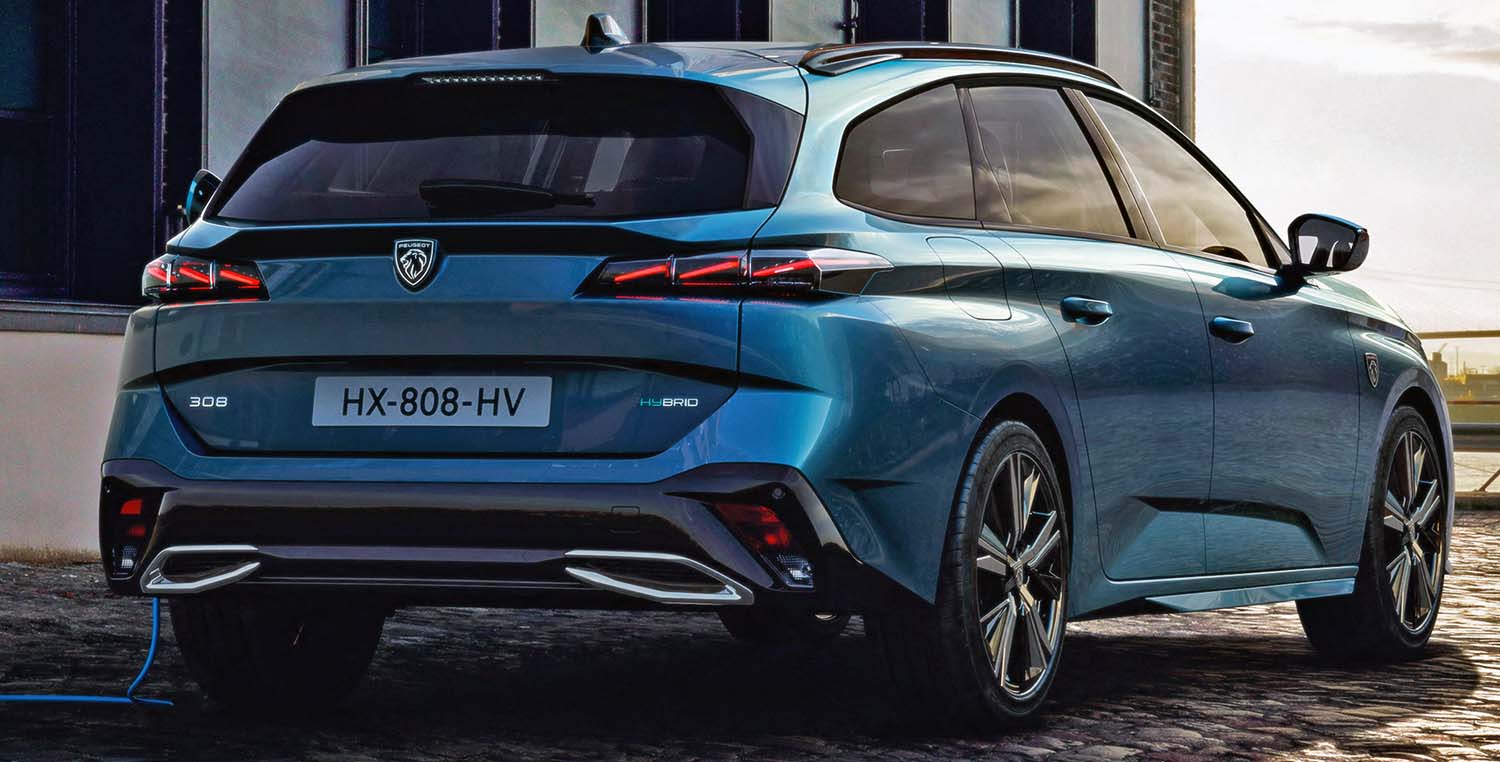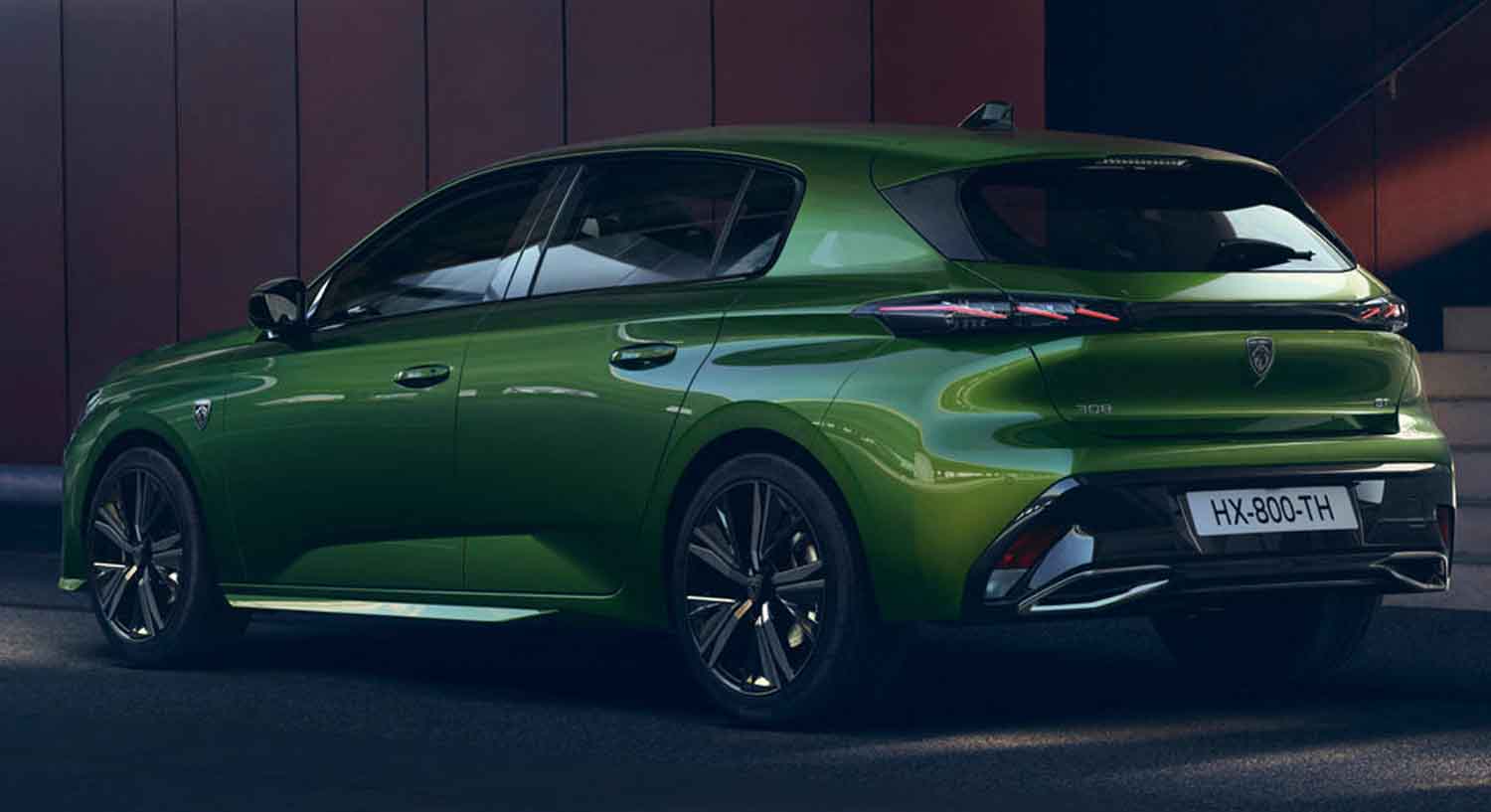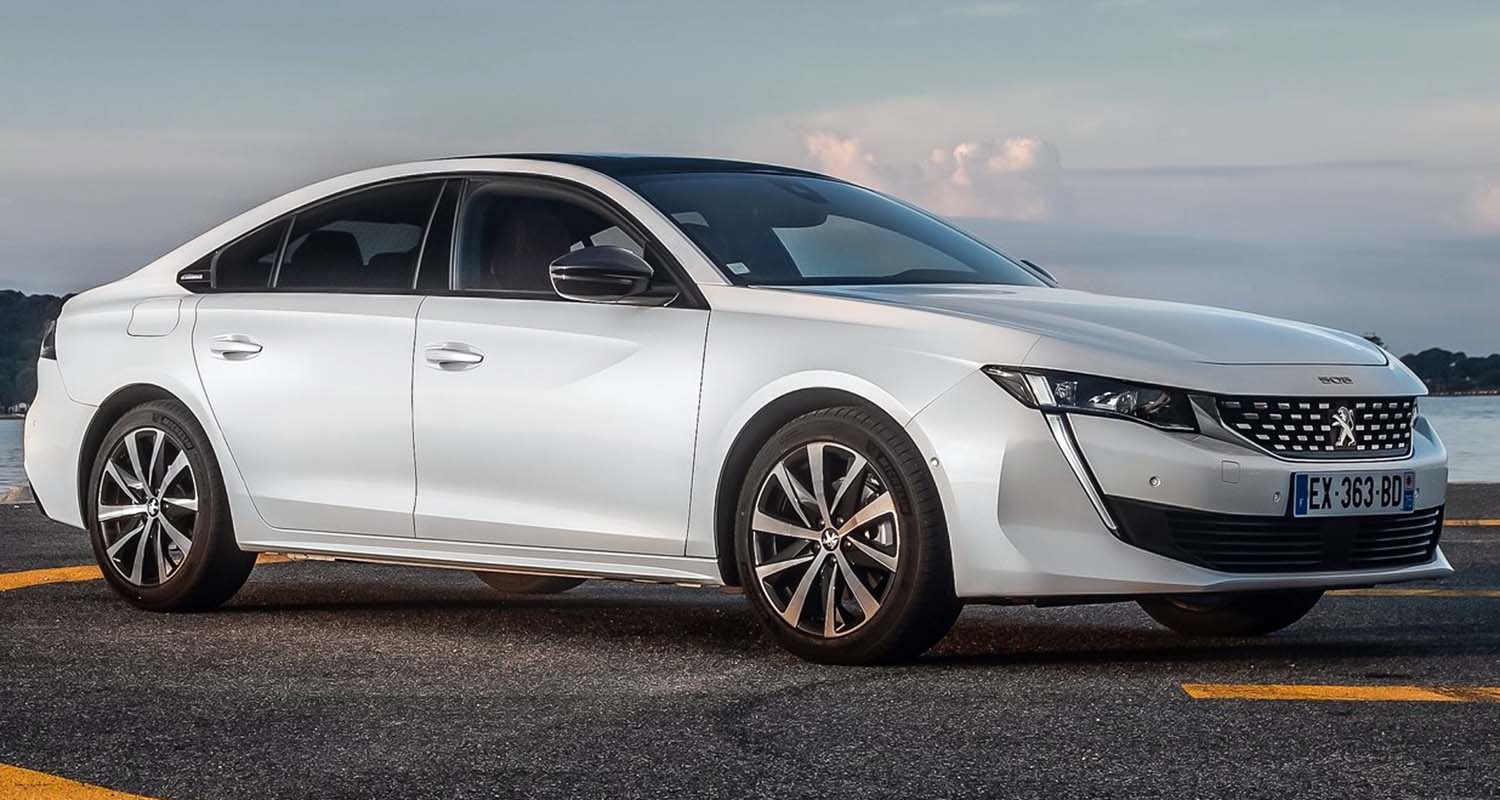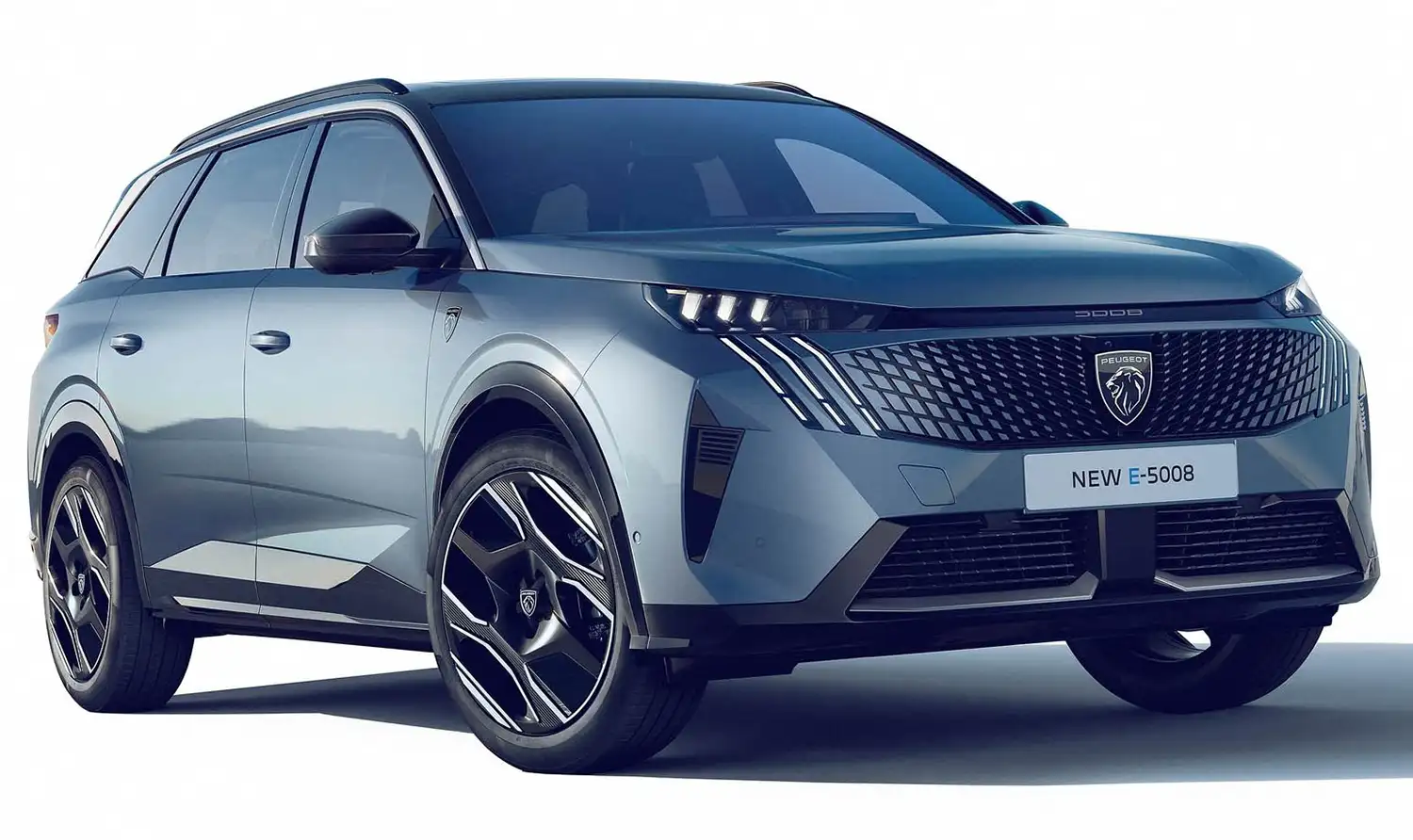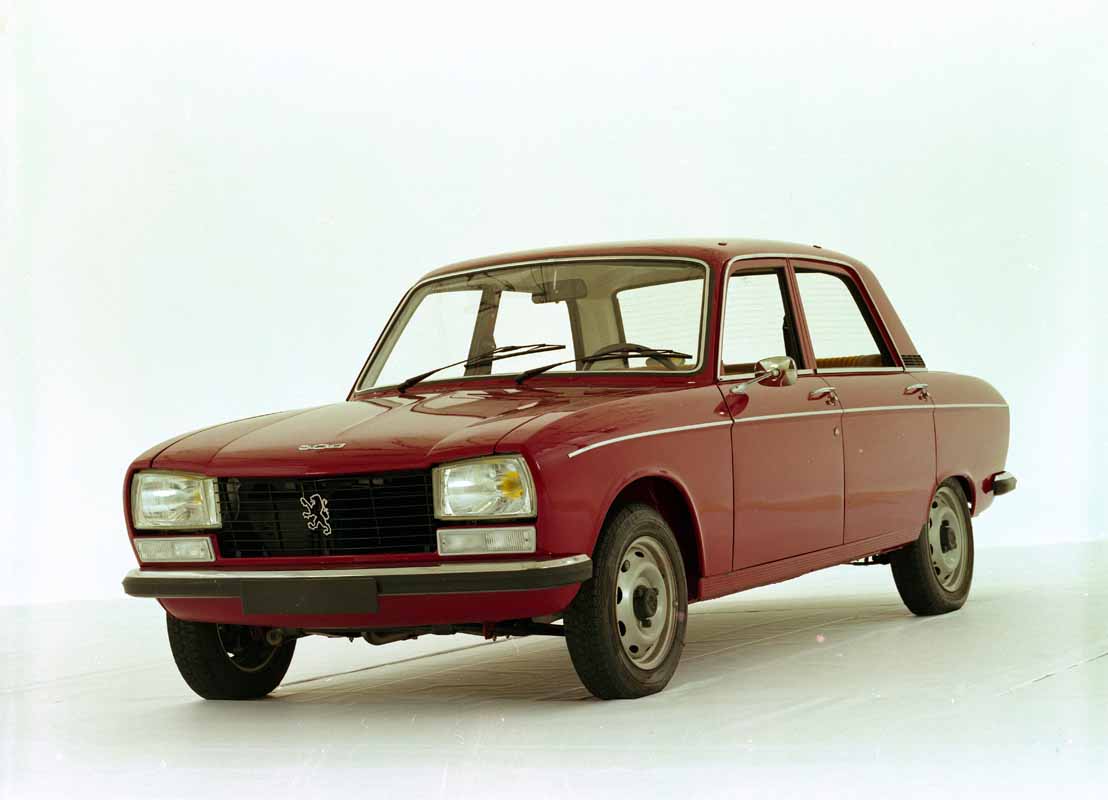
Modern and stylish, the new PEUGEOT 308 arrived on the French market in September 2021, the next vehicle in the “300 Series” line, the most complete in the history of the PEUGEOT brand, inaugurated in 1932 with the PEUGEOT 301. From the PEUGEOT 301 to the new PEUGEOT 308, 10 generations, and 90 years of automotive history and technical progress have unfolded. The PEUGEOT 303 is the only generation that was skipped! – one exception to the successive models is the 309, which was released between the 305 and 306, two Car of the Year titles since 2000, and notable excursions into rallying.
PEUGEOT’s 300 series models are compact cars located between the small saloon and the family car. For the past 90 years, all or part of their production has taken place at the historic PEUGEOT site in Sochaux – except for the PEUGEOT 309, which was produced at the Poissy plant, and the new generation, which was produced in Mulhouse.
At the beginning of the 1930s, in the midst of the economic crisis, PEUGEOT met the demands of exacting customers by launching the PEUGEOT 301, which was sold from 1932 to 1936 as a saloon, limousine, coupé, cabriolet and roadster. Powered by a 1,465 cm3 engine developing 35 bhp, the 301 was produced in 70,500 units.
The PEUGEOT 302 succeeded it in 1936, and 25,100 examples were produced until 1938. This was a time when car manufacturers were discovering aerodynamics, and the 302 was an example of this: with its integrated headlights located behind the radiator grille, it had a streamlined front end, which carried on the style known as the ‘Sochaux spindle’ inaugurated with the PEUGEOT 402. The latter having been a great success, the Brand decided to use the same line for its “intermediate” range, embodied by the PEUGEOT 302. This car could reach the crazy speed of 100 km/h.
The war disrupted the course of the 300 Series, and the PEUGEOT 303 never came to be: this series was put on hold for three decades until the arrival of the PEUGEOT 304, presented in 1969 at the Paris Show. It was available as a saloon, coupé, cabriolet, estate and utility estate, known as the glass estate. The PËUGEOT 304 aimed to occupy the medium-sized segment, and kept the technical base of the PEUGEOT 204. However, it differs from the 204 in that its front end has a vertical grille and the saloon is 15 cm longer (4.14 m compared with 3.99 m), but only 2 cm longer in the estate version (3.99 m compared with 3.97 m for the 204). From the 204, the PEUGEOT 304 retains the wheelbase and the central part of the body. The stern is longer. The modernised bow, with its trapezoidal headlights, is similar to that of the PEUGEOT 504. It is impressively spacious, an essential condition for a family saloon.
Between 1969 and 1979, almost 1,200,000 units of the 304 were produced and it was a great commercial success. Between 1970 and 1972, PEUGEOT also launched the 304 in the United States. It was too small for the American market, and only sold 4,000 models. In 1973, it was restyled and in 1975, the coupé and cabriolet versions disappeared. The saloon remained in dealerships until 1979.
The PEUGEOT 305 was launched in Europe in 1977 as the successor to the PEUGEOT 304. Two body styles were available: a 4-door saloon and a 5-door estate, which also came with a rear seat that can be folded in half. Designed in cooperation with Pininfarina, this station wagon was available in a commercial version. The PEUGEOT 305 is the next step up for the PEUGEOT 304 platform and its 1.3 litre petrol engine. It stands out from its foreign competitors thanks to its front-wheel drive, its crossways engine and its 4 independent wheels. With its benchmark road holding, its huge interior and its comfort worthy of the higher segments, the PEUGEOT 305 quickly gained a foothold on the market. More than 1.6 million units of all body styles were produced.
The PEUGEOT 305 saloon served as the basis for the VERA experimental programme, designed to improve the fuel efficiency of future generation cars. The first VERA 01 prototype unveiled in 1981 had a 20% reduction in mass and a 30% reduction in aerodynamic drag. Conducted over 5 years with work extended to engines, the VERA programme had a considerable influence on the development of the Brand’s 205, 405 and then 605 models.
The arrival of the PEUGEOT 309 in 1985 slowed down the sales of the 305, whose career ended in 1989. It was in fact the PEUGEOT 405, and not the 309, which succeeded it in the PEUGEOT range in 1987.
Produced between 1985 and 1994 in Poissy, Spain and Great Britain, the PEUGEOT 309 was the first true “compact” car in the modern sense: it was no longer a classic 4-door notchback like the 304 and 305, but a hatchback. With a length of 4.05 m, it is 19 cm more compact than a 305 (4.24 m in its saloon version). Inspired by the Talbot Horizon but with its own style, it borrows the platform and doors of the PEUGEOT 205, with elongated front and rear sections, and a glass bubble that characterises its hatchback.
Launched in a 5-door version, the 309 also came in a 3-door version two years later, in 1987. The 309 GTI, powered by the 1.9 litre 130 hp engine of the 205 GTI, was introduced. The 309 GTI accelerated from 0 to 100 km/h in 8 seconds and reached a top speed of 205 km/h. In 1989, the 309 GTI received the MI16 160 hp engine from the PEUGEOT 405: it became the 309 GTI 16, a formidable compact sports car respected by the competition. The 309’s career ended in 1994. Over 1.6 million units were sold.
The Brand launched the PEUGEOT 306 in February 1993. It replaces both the top of the range PEUGEOT 205 and the PEUGEOT 309. It became a best-seller in its category and was produced and assembled at no less than 9 sites around the world until 2002. Available in 3 and 5-door versions from 1993, it was joined in the range by a 4-door and an attractive convertible in 1994. Designed and built by Pininfarina, the latter was voted Most Beautiful Convertible of the Year at the 1994 Geneva Motor Show, and Convertible of the Year in 1998. Once again, the PEUGEOT 308’s road holding set the standard; it was particularly highlighted on the sporty versions: PEUGEOT 306 XSI and PEUGEOT 306 S16. A spectacular and unforgettable 285 bhp MAXI version marked PEUGEOT’s great return to rallying in 1996 after a 10-year hiatus.
It won the hotly contested French Rally Championship with Gilles Panizzi in 1996 and 1997, and went on to win some of the asphalt rounds of the World Rally Championship, causing great alarm for much more powerful World Rally Cars, like in Corsica in 1997 and 1998.
The 306 was restyled in 1997, during which year an estate version also appeared. Production of the 3 and 5-door versions of the 306 was stopped in 2001, when its replacement, the PEUGEOT 307, was presented. The estate car saw its career end in 2002. The convertible was still produced by Pininfarina until 2003.
Launched in 2001 and voted Car of the Year in 2002, the PEUGEOT 307 was a huge success, with over 3.5 million units produced worldwide. It heralds a new semi-high architecture, providing better space, and has a surprisingly large sloping windscreen. Available in 3-door, 5-door and estate versions, it received an additional silhouette in the summer of 2003: the Coupé Cabriolet (CC), which transferred the innovative concept successfully introduced on the 206 CC to the compact segment. With its retractable hardtop and its 4 comfortable seats, the 307 CC is one of the most spacious convertibles of the time. It was also the basis for the sports version entered in the World Championship in 2004 and 2005, winning 3 times and appearing on the podium 26 times.
A first generation PEUGEOT 308 succeeded the PEUGEOT 307 in 2007, which was replaced by a second generation in 2013, then a third, the current 308 launched in 2021.
The PEUGEOT 308 I came in 3-door, 5-door and SW estate versions, supported from March 2009 by a new generation of the Coupé Cabriolet CC model. A 308 RCZ Coupé version was revealed at the 2007 Frankfurt Motor Show, and production was quickly confirmed, giving rise to the PEUGEOT RCZ, a handsome 2+2 coupé produced in 68,000 units between 2010 and 2015, the ultimate version of which offered 270 bhp and 0 to 100 km/h in 5.9 seconds.
The PEUGEOT 308 II was launched in 2013. Like the 307 12 years earlier, it was voted Car of the Year in 2014. Its style and sober and elegant lines are innovative, along with its liveliness and driving pleasure that are unanimously acclaimed, as well as a reduced size and weight (4.27 metres in length and a base version at 1,200 kg). The passenger compartment is also new with its PEUGEOT i-Cockpit, already found on the PEUGEOT 208, and which is setting the standard: the compact steering wheel, which reduces the amplitude of movements, provides unequalled driving sensations, while facilitating driving in town.
A GTi version further enhances the driving qualities and dynamism of this 308, which is taking PEUGEOT into a new era of success.
7 million PEUGEOT 308s were sold over the first two generations, before the new PEUGEOT 308 III made its debut. Produced at the Mulhouse plant, it bears the new PEUGEOT logo, which was unveiled when the new brand identity was introduced in February 2021. Attractive, technological and efficient, it is one of the finalists in the election of the Car of the Year 2022, the result of which will be known at the end of February 2022.
